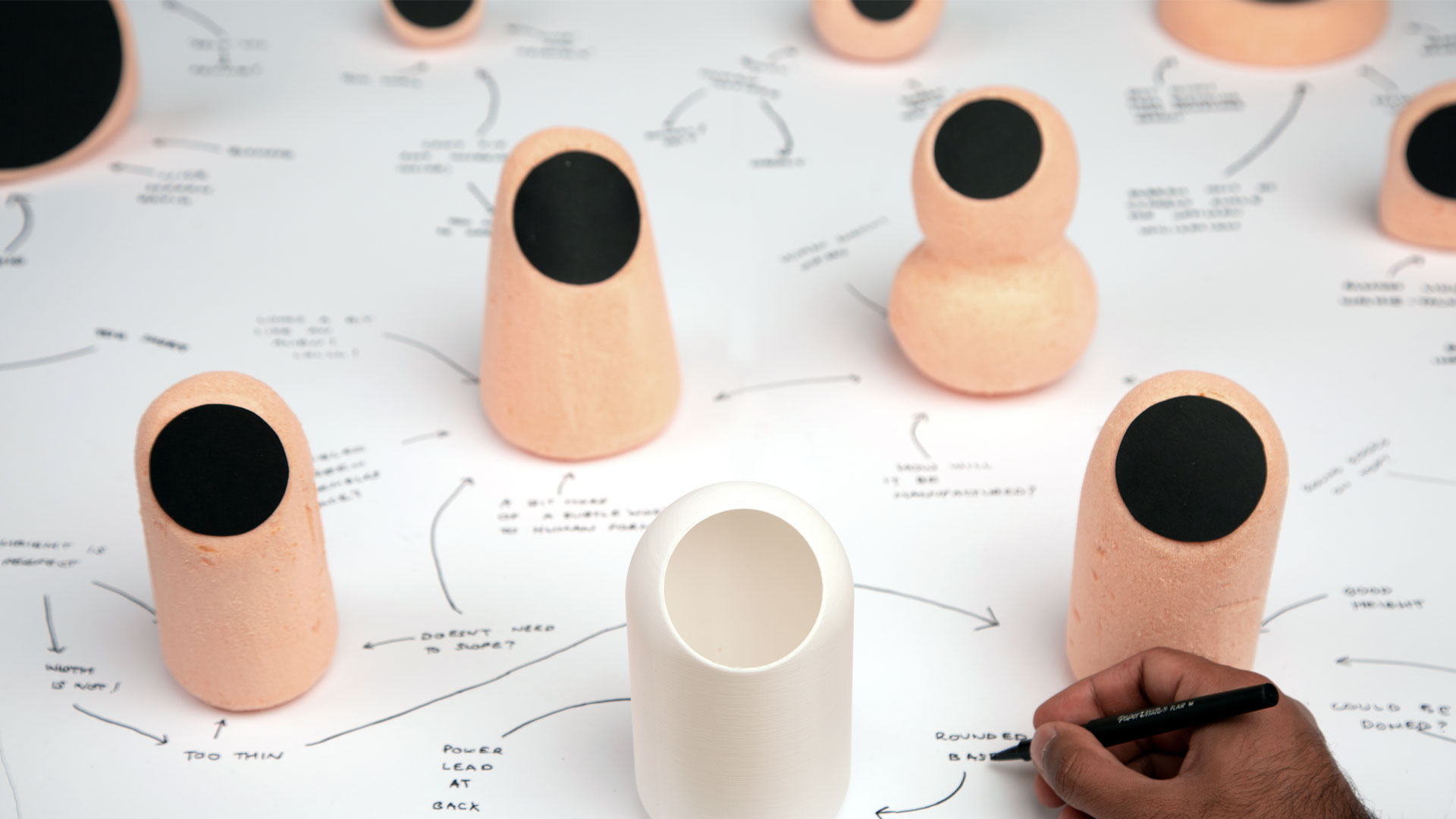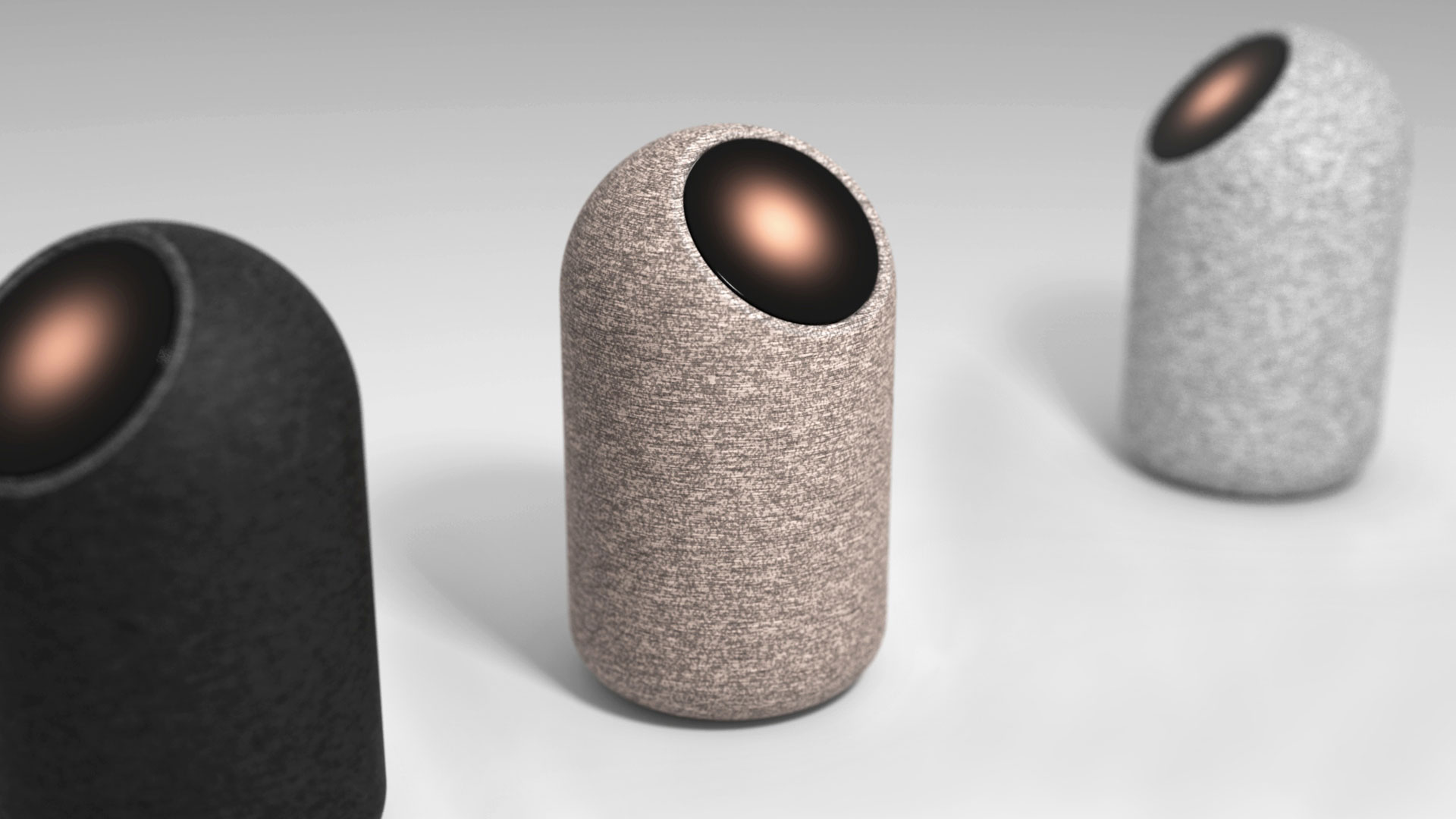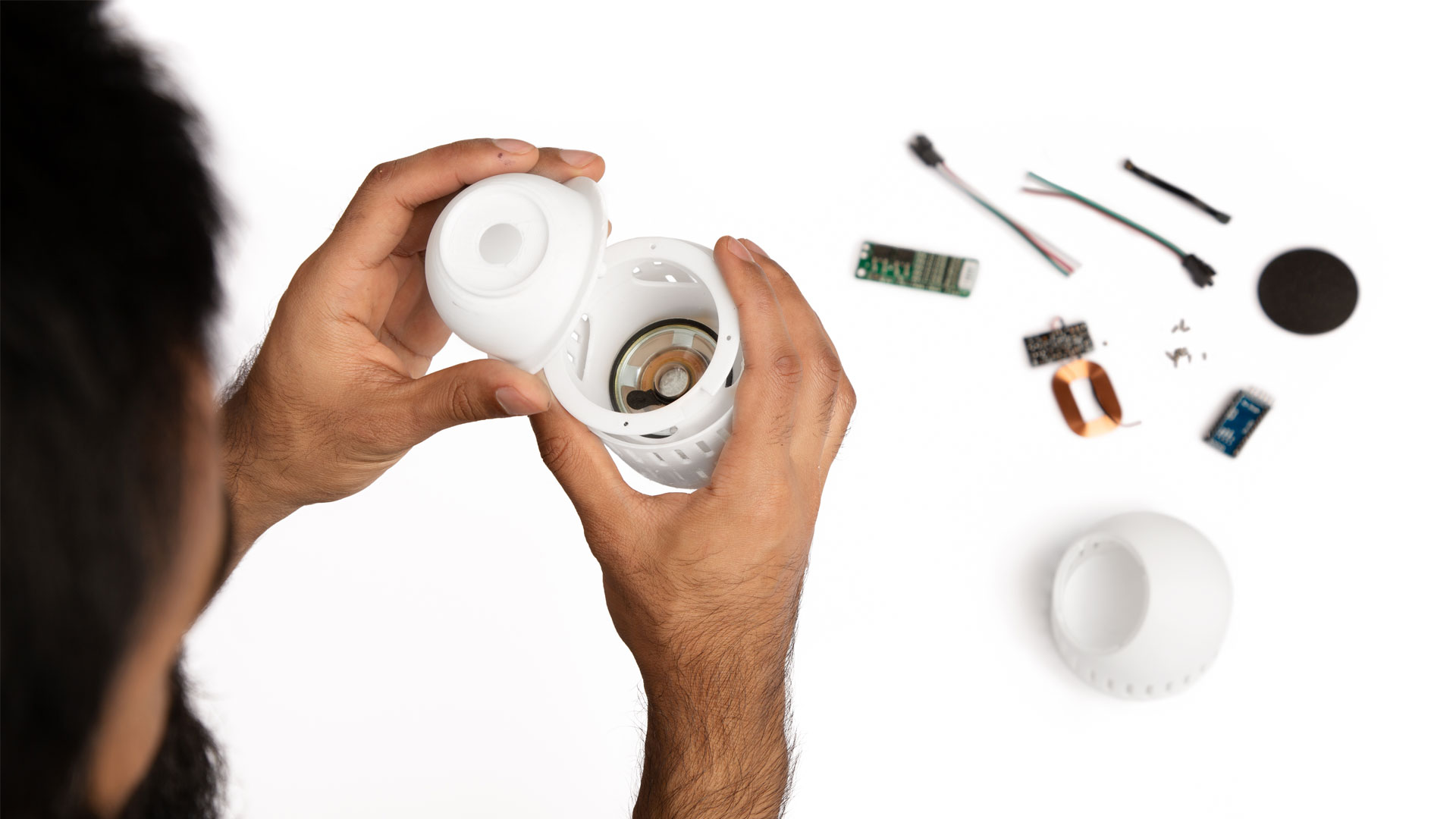gloo
Creating an emotional connection with our smart devices

1 in 4 people in the US and UK own a smart speaker and, since last year, the number of people who own a smart speaker increased by 135%. This begs the question – are smart speakers becoming the norm? Are we now treating smart speakers as our personal assistants? Countless people are becoming increasingly frustrated with their smart speakers. Why are these so-called "smart speakers" not smart enough to cater for human emotion? Why has a speaker not been created which a human can bond with?
What is the "Sense" range?
People need products they can relate to, products that play a vital role in their life, products that consider human emotions. "Sense" is a collection of products which focus on making technology less intimidating. It uses relatable design via form, colours, materials and finishes to achieve this. The products are viewed as a human companion rather than a tech attachment. The aim is not to create new devices, but to design the products that have been missing from people's lives.

Teardown of existing smart speaker to inspect the internal components used

Initial design sketches looking at abstracting the human form

Physical soft modelling to have a gauge of physical proportions

Colours, materials and finishes for the final product exploring possible options including plastic (matte and gloss), acousting mesh, and acoustic fabric

Final design

Available in 3 different colours. Fabric gives a more homely and personal touch to the aesthetic as well as tactility. The beige colour was created by finding the average of colour of different races across the globe.

Pulsating indicator screen

CAD showing internal components housed inside the product

CAD exploded view of individual components used for the smart speaker

Custom wireless charger detail on the underside of the product

The prototyping stage consisted of various internal components as well as 3D printed housings

Individual components of the product surrounding the assembled final design

The companion app allows the user to set specific variables for their speaker. Test it out here

The companion app being used alongside Gloo

Packaging design for Gloo

Insitu of family using Gloo
Unfortunately, smart speakers currently on the market are not tailored to each user. If a user talks in a specific dialect or colloquialism, most devices may not understand the user. "Gloo", on the other hand, is extremely intuitive and can learn from anyone. It is designed to learn naturally from the user rather than solely relying on a logical script. For example;
- User: "Where can I get a munch in SoCal?"
- Gloo: "Sorry, I don't understand, please explain?"
- User: "What are some good restaurants in South California?"
From this, the device learns to "translate" the first question. As the user communicates more with the speaker, it will eventually understand that "SoCal" means "South California".
Designed to resemble the human form both by look and feel, ‘Gloo’ encourages people to treat it like a human and converse politely with it. Moreover, ‘Gloo’ has a ‘virtual age’. This means, the more it learns, the older and wiser it becomes! This further adds to the emotional connection that the user creates with the device, almost like raising a child. The companion app also allows a range of other features such as choosing a male, female or gender-fluid voice (inspired by last year’s winner of the digital Design of the Year award – anatomy of an AI system).
Acknowledgements: Ideation (Ramzan, H), Material Research (Birkett, B), Photography (Cate Castleton Photography)
Date: October 2020

